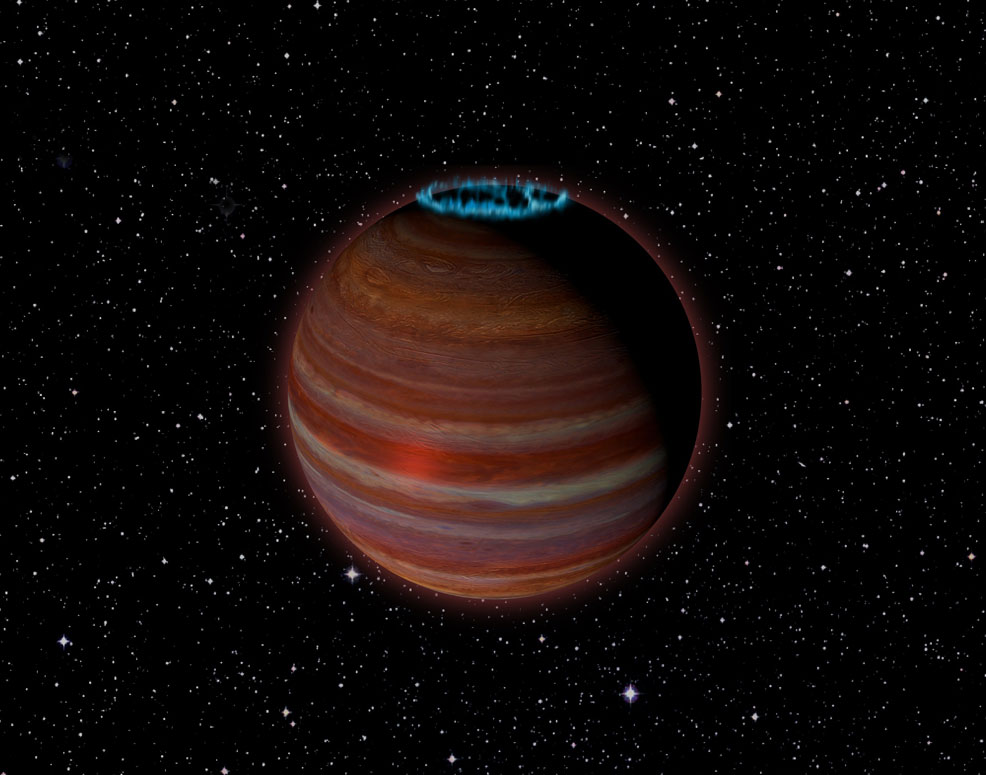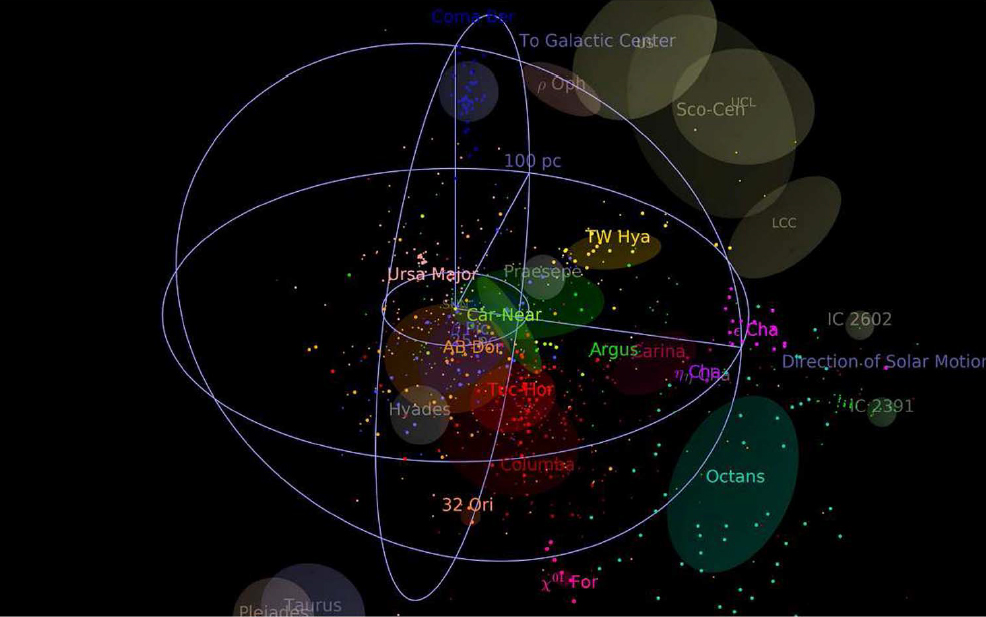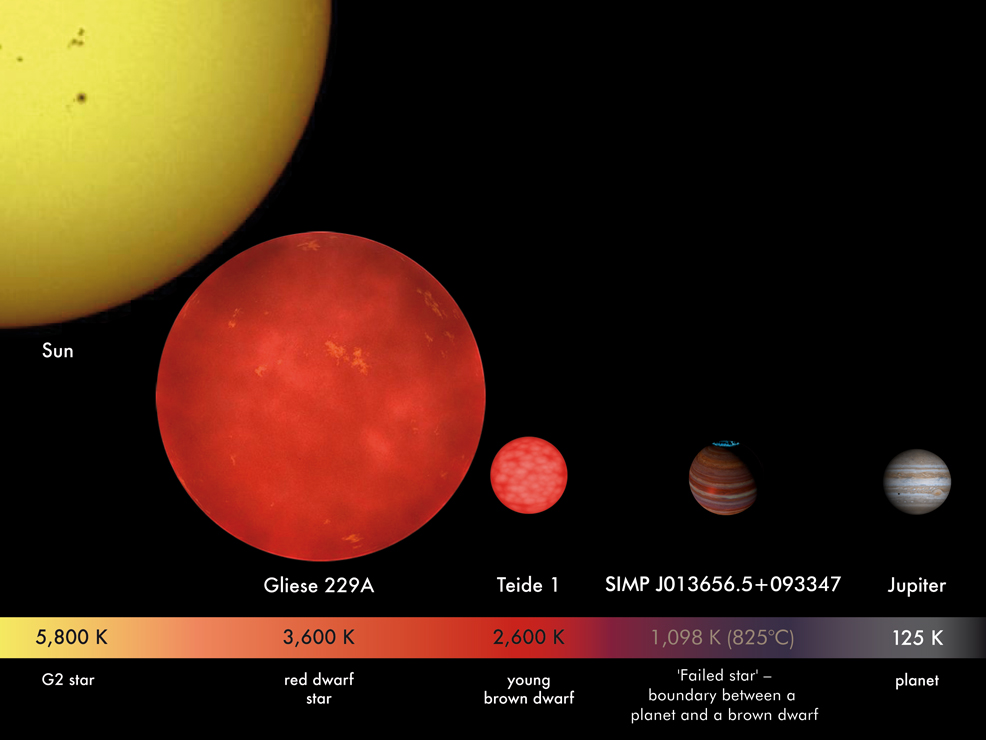
6th August 2018 Astronomers find "magnetic powerhouse" in local stellar neighbourhood Astronomers report the detection of an extremely strong magnetic field and aurora around a brown dwarf, which may possibly be a rogue planet, located 20 light years from Earth.
Astronomers using the Very Large Array (VLA) in Socorro, New Mexico, have made the first ever radio telescope detection of a planetary-mass body beyond our Solar System. The object, about a dozen times more massive than Jupiter, is described as a "strong magnetic powerhouse" and a possible "rogue" travelling through space without any parent star. "This object is right at the boundary between a planet and a brown dwarf, or 'failed star,' and is giving us some surprises that can potentially help us understand magnetic processes on both stars and planets," said Melodie Kao, who led this study while a graduate student at Caltech, and is now a Hubble Postdoctoral Fellow at Arizona State University. Brown dwarfs are objects too massive to be considered planets, yet not massive enough to sustain nuclear fusion of hydrogen in their cores – the process that powers stars. They were theorised to exist in the 1960s, but the first confirmed observation did not occur until 1995. They were originally thought to not emit radio waves, but in 2001 a discovery of radio flaring in one revealed strong magnetic activity. Subsequent observations showed that some brown dwarfs have strong auroras, similar to those seen in our own Solar System's giant planets. The ones seen on Earth are caused by our planet's magnetic field interacting with the solar wind. However, solitary brown dwarfs do not have a solar wind from a nearby star to interact with. How the auroras are caused in brown dwarfs is unclear, but the scientists think one possibility is an orbiting planet or moon interacting with the brown dwarf's magnetic field, such as what happens between Jupiter and its moon Io. The strange object in this new study – given the catchy name SIMP J013656.5+093347 – has a magnetic field more than 200 times stronger than Jupiter's. Originally detected in 2016, it was thought to be an older and much more massive brown dwarf. However, further measurements in 2017 found that it was actually very young, with a mass low enough to qualify as a free-floating planet or "rogue" – 12.7 times more massive than Jupiter, with a radius only 1.22 times that of Jupiter and a surface temperature of only 825°C (for comparison, our Sun is 5,500°C). It is located about 20 light years from Earth and seems to be a member of the Carina-Near stellar moving group. This region is marked as "Car-Near" on the map of our local stellar neighbourhood shown below, which includes the direction of the galactic centre at the top of the image.
The difference between a gas giant planet and a brown dwarf remains a subject of debate among astronomers, but one rule of thumb that astronomers use is the mass below which deuterium fusion ceases, known as the "deuterium-burning limit" – around 13 Jupiter masses. Simultaneously, the team who first detected its radio emission in 2016 had observed it again in another new study at even higher radio frequencies and confirmed that its magnetic field was even stronger than first measured. "When it was announced that SIMP J01365663+0933473 had a mass near the deuterium-burning limit, I had just finished analysing its newest VLA data," explained Kao. The VLA observations provided both the first radio detection and the first measurement of the magnetic field of a possible planetary mass object located beyond our Solar System. Such a strong magnetic field "presents huge challenges to our understanding of the dynamo mechanism that produces the magnetic fields in brown dwarfs and exoplanets and helps drive the auroras we see," said Gregg Hallinan, also from Caltech. "This object is exciting because studying its magnetic dynamo mechanisms can give us new insights on how the same type of mechanisms can operate in extrasolar planets," added Kao. "We think these mechanisms can work not only in brown dwarfs, but also in both gas giant and terrestrial planets." "Detecting SIMP J01365663+0933473 with the VLA through its auroral radio emission also means that we may have a new way of detecting exoplanets – including the elusive rogue ones not orbiting a parent star," said Hallinan. The team's latest findings are published in The Astrophysical Journal.
Comments »
If you enjoyed this article, please consider sharing it:
|









